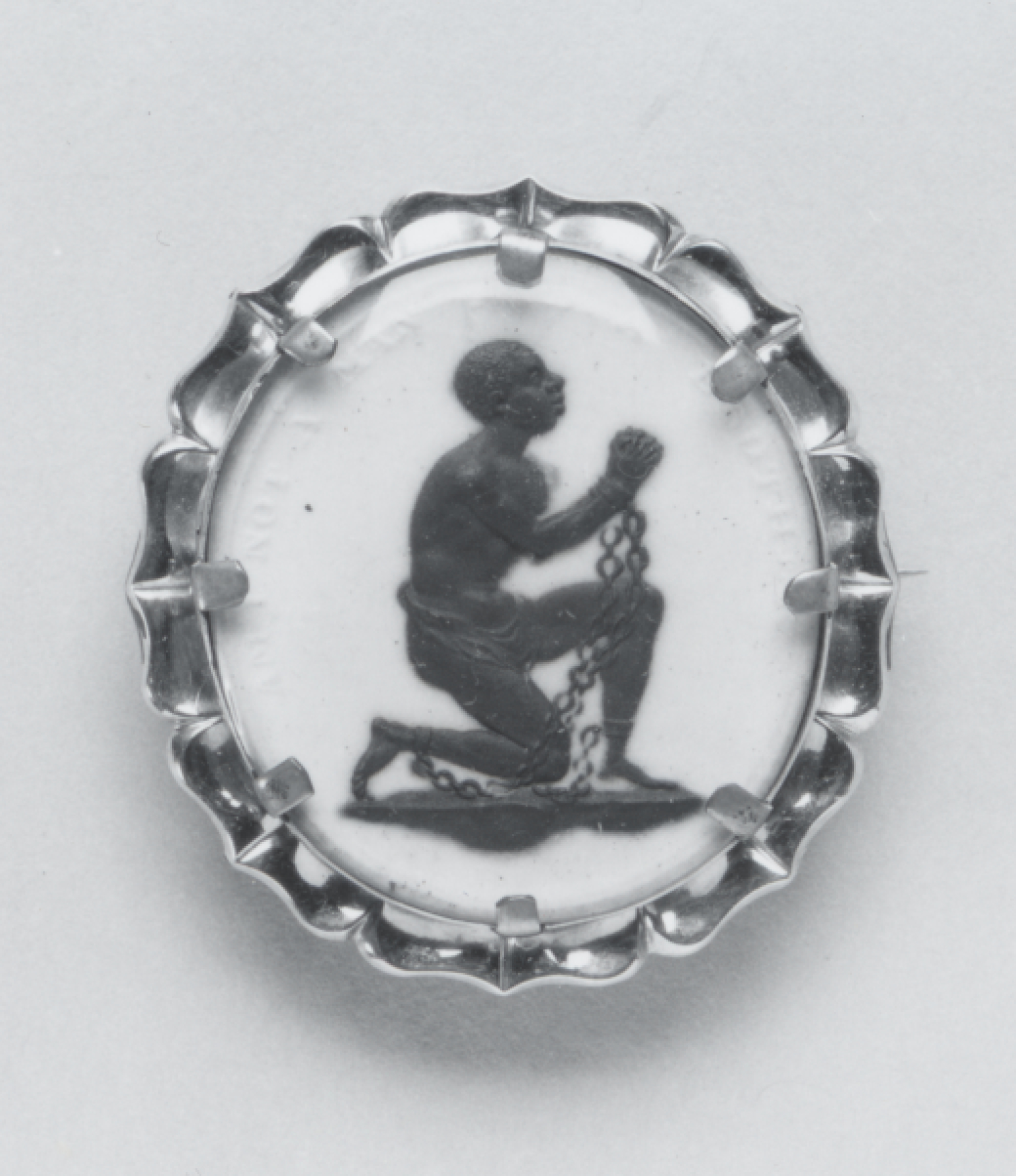Anti-Slavery Cameo
Josiah Wedgwood, a potter and leading member of the Society for Effecting the Abolition of the Slave Trade, had this medallion modeled after the Society’s seal and produced in ceramic. Wedgwood donated hundreds of medallions to the Society to promote the movement, and they became a fashionable accessory on both sides of the Atlantic, mounted into jewelry and snuffboxes.
The image is highly problematic as it shows a black man praying or pleading with a presumably white captor for his freedom, it therefore invokes narratives of both forced conversion to Christianity and supplication, leaving racial hierarchies intact at the same time as the inscribed text suggests equality. Indeed, although the design became the most recognized image of the anti-slavery movement, the Society for Effecting the Abolition of the Slave Trade was emphatic that its only goal was the abolition of the slave trade, not slavery. That position was vigorously protested by individual members such as Granville Sharp, the most influential abolitionist of his time. In 1807 Britain abolished the trade in enslaved people, and in 1833 abolished slavery in most of its colonies.
Inscription
Provenance
Provenance (from the French provenir, 'to come from/forth') is the chronology of the ownership, custody, or location of a historical object. Learn more about provenance at the Walters.
Taylor B. Williams Antiques, Chicago; purchased by Walters Art Museum, 1989.
Exhibitions
| 2007 | At Freedom's Door: Challenging Slavery in Maryland. Maryland Historical Society, Baltimore. |
Geographies
United Kingdom, England, Stoke-on-Trent, Etruria (Place of Origin)
Measurements
H: 1 1/2 x W: 1 7/16 in. (3.8 x 3.6 cm)
Credit Line
Museum purchase, 1989
Location in Museum
Not on view
Accession Number
In libraries, galleries, museums, and archives, an accession number is a unique identifier assigned to each object in the collection.
In libraries, galleries, museums, and archives, an accession number is a unique identifier assigned to each object in the collection.
48.2597


